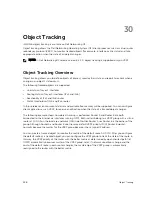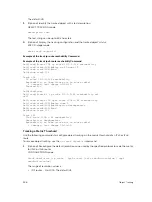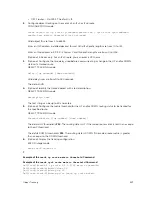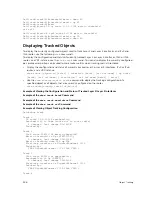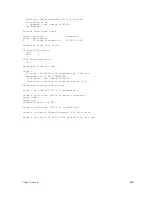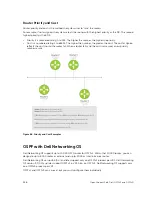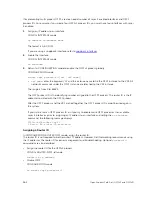
Areas allow you to further organize your routers within in the AS. One or more areas are required within
the AS. Areas are valuable in that they allow sub-networks to "hide" within the AS, thus minimizing the
size of the routing tables on all routers. An area within the AS may not see the details of another area’s
topology. AS areas are known by their area number or the router’s IP address.
Figure 84. Autonomous System Areas
Area Types
The backbone of the network is Area 0. It is also called Area 0.0.0.0 and is the core of any AS.
All other areas must connect to Area 0. Areas can be defined in such a way that the backbone is not
contiguous. In this case, backbone connectivity must be restored through virtual links. Virtual links are
configured between any backbone routers that share a link to a non-backbone area and function as if
they were direct links.
An OSPF backbone is responsible for distributing routing information between areas. It consists of all area
border routers, networks not wholly contained in any area, and their attached routers.
NOTE: If you configure two non-backbone areas, then you must enable the B bit in OSPF.
Open Shortest Path First (OSPFv2 and OSPFv3)
551
Summary of Contents for Z9000
Page 1: ...Dell Configuration Guide for the Z9000 System 9 7 0 0 ...
Page 80: ...grub reboot 80 Management ...
Page 128: ... 0 Te 1 1 Te 1 2 rx Flow N A N A 128 Access Control Lists ACLs ...
Page 491: ...Figure 70 Configuring OSPF and BGP for MSDP Multicast Source Discovery Protocol MSDP 491 ...
Page 496: ...Figure 73 MSDP Default Peer Scenario 1 496 Multicast Source Discovery Protocol MSDP ...
Page 497: ...Figure 74 MSDP Default Peer Scenario 2 Multicast Source Discovery Protocol MSDP 497 ...
Page 498: ...Figure 75 MSDP Default Peer Scenario 3 498 Multicast Source Discovery Protocol MSDP ...
Page 760: ...Figure 100 Single and Double Tag TPID Match 760 Service Provider Bridging ...
Page 761: ...Figure 101 Single and Double Tag First byte TPID Match Service Provider Bridging 761 ...


